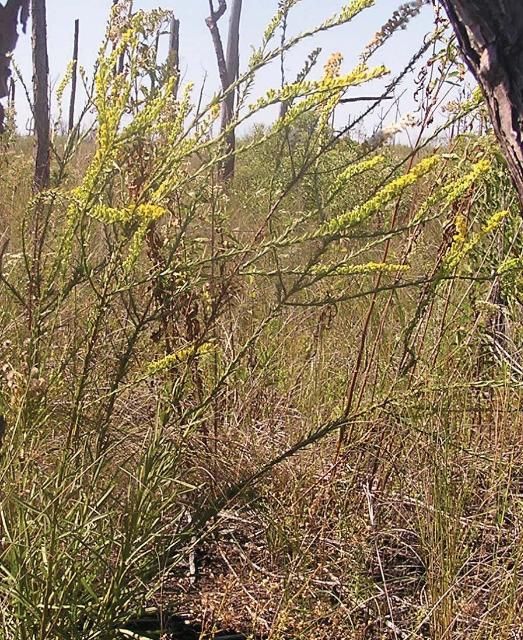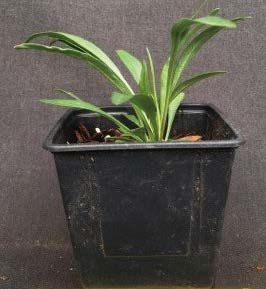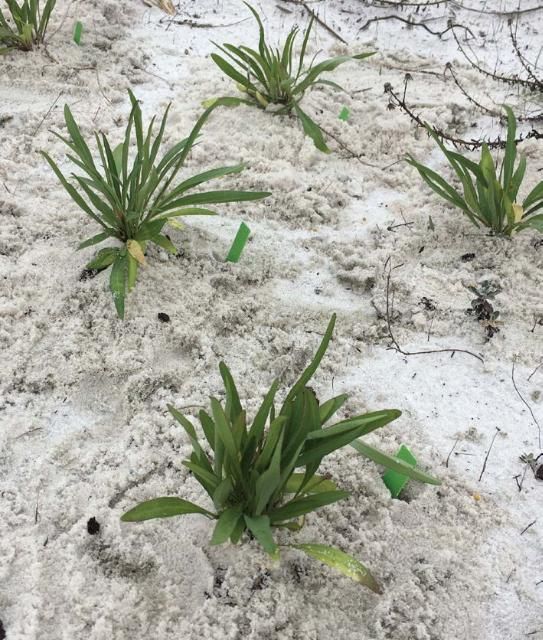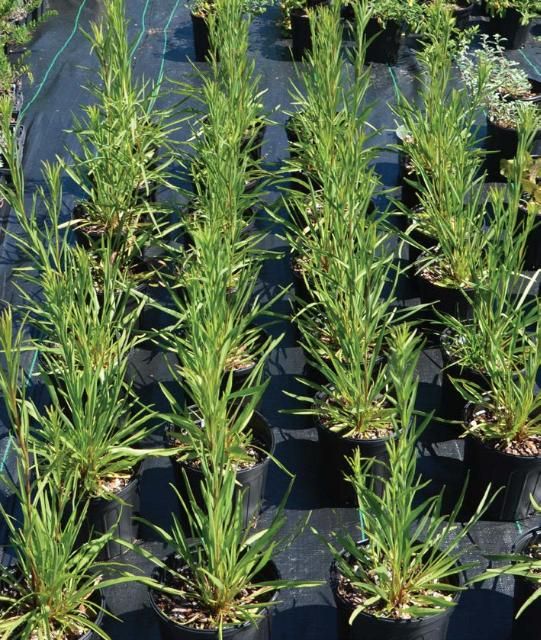Note: This fact sheet is also available as a chapter in a comprehensive manual titled Dune Restoration and Enhancement for the Florida Panhandle, available in pdf form here: https://edis.ifas.ufl.edu/publication/SG156. Please see the manual for more information about other useful and attractive native plants for dunes and for further information about restoration and preservation techniques.
Asteraceae

Credit: Leslie Atwood, UF/IFAS
Seaside goldenrod is highly tolerant of both saline soils and salt spray and is usually found on beach dunes, tidal marshes, and disturbed areas throughout coastal areas from Mexico North to Maine and on islands in the Bahamas. It is a prolific flower- and seed-producer. It attracts many pollinators, including birds, native bees, honey bees, butterflies (especially Monarch butterflies), and beneficial insects. The flowers are an important food/energy source for fall migrating monarch butterflies traveling the Atlantic coastal flyway (Sheahan 2014).
General Description
Seaside goldenrod is a perennial, herbaceous, clump-forming, stoloniferous species with high salt- and drought-tolerance. The plant may achieve heights of 1.3 to 6.6 ft and clumps may spread to widths of 1.6 ft.
Leaves initially in rosettes up to 40 centimeters long, glabrous, linear, entire, with cauline leaves that gradually reduce upward, appressed to the stem, and somewhat fleshy. Inflorescences are yellow heads in terminal panicles occuring from summer to fall. Panicles may be bent backwards and are arranged on one side. Yellow ray flowers are up to 5 mm long. Fruits are hairy achenes up to 2 mm long ripening in late summer to fall.
Propagation
Seeds from a North Carolina population, needed cold stratification and light to achieve high germination in constant 15 or 25°C or alternating day/night temperatures of 10/15, 15/25, or 20/30°C. (Van Der Valk 1974). Seeds are reported to remain viable for up to 2 years when stored below 40°F (Sheahan 2014). Because of the reported need for light to promote germination, seeds planted in the field should only be buried enough to prevent wind-caused movement.
The authors collected wild-grown seed from a Florida coastal plant community in late fall and minimally cleaned and non-graded seed were sown on the surface of Fafard 3B potting mix with a light dusting of vermiculite. Seeds germinated with high success within two weeks of sowing.

Credit: Gabriel Campbell, UF/IFAS
Seedlings remained under intermittent mist for two weeks after germination before they were transplanted, suggesting these plants do not degrade under long periods of mist exposure. Four weeks after sowing, seedlings were transferred to 4-inch pots with an amended 100% pinebark substrate and transferred to outdoor production in mid-January. By week 12, plants in 4-inch pots were large enough to have a sufficient rootball and canopy for outplanting. Plants retained in 1-gallon nursery containers began to initiate inflorescences by June.
Outplanting
Plants grown in 4-inch pots with well-developed rootballs and canopies have successfully been outplanted by the authors in late February with near 100% survival after 2 months. Plants were outplanted on backdunes, mid-slope at least 12 in from each other and from existing perennial grasses. Fertilizer application (½ tsp Osmocote 18-6-12) improved the aesthetic appearance and increased biomass for this plant but was not necessary for survival.

Credit: Gabriel Campbell, UF/IFAS

Credit: Gabriel Campbell, UF/IFAS
Literature Cited
Van Der Valk, A.G. 1974. "Environmental factors controlling the distribution of forbs on coastal foredunes in Cape Hatteras, National Seashore." Canadian Journal of Botany 52:1057–1073.
Sheahan, C.M. 2014. "Plant Guide for seaside goldenrod (Solidago sempervirens)." USDA-Natural Resources Conservation Service, Cape May Plant Materials Center. Cape May, 08210.